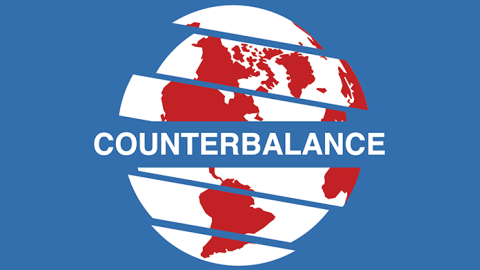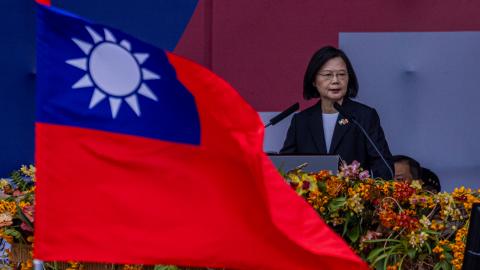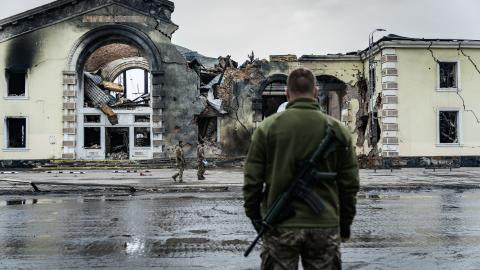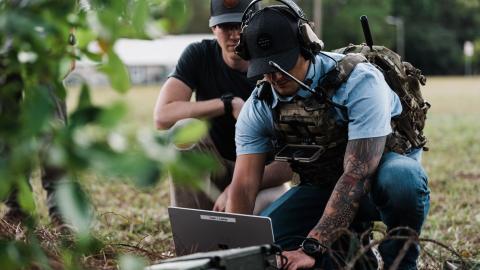Here's an idea: Let's try reducing the supply of insurgency in Afghanistan rather than reducing the demand for it. This notion--potentially as important an insight as the Laffer curve--comes from a 41-year-old book by a retired RAND Corporation scholar now entering his ninth decade, Charles Wolf Jr.
Supply-side economics focuses on increasing the supply of goods and services, famously by lowering tax rates, rather than the often-impossible task of moving the demand curve. But looking at supply rather than demand management may be worth applying in our counterinsurgency in Afghanistan as well. The current policy debate is stuck among a few old ideas—negotiating with the Taliban, more "counterinsurgency," more drone strikes—so a fresh approach is worth considering.
The supply-side approach to COIN, as in economics, dates to the 1970s. A distinguished economist and public policy theorist, Wolf articulated it in a slim 1970 volume, Rebellion and Authority: An Analytic Essay on Insurgent Conflict, co-authored with Nathan Leites, sponsored by RAND and published by Markham. (Wolf is still serving on hedge fund boards and playing tennis in Santa Monica; Leites, a Soviet expert, died in 1987.) The authors are opposed to the so-called hearts-and-minds school of counterinsurgency, which looks at the demand for insurgency in the population: "Attitudes, in the sense of preferences, affect behavior but are not identical with it; nor, in most cases are they the primary influence on it." And supply for rebellion is probably more elastic than demand. Instead, they argue that counterinsurgents ought to focus on reducing the supply of insurgency: Cut the inputs that allow rebels to act, rather than focusing on the much harder task of changing the preferences of the population.
Wolf/Leites point out that rebellions can spread even if the rebel cause is unpopular. This seems to be what is happening in Afghanistan, where the Taliban have never scored above 10 percent approval in polling but are gaining ground in many areas of the country. The population—which the authors take to be rational economic actors—makes a calculation of the costs and benefits of supporting one side or another, and decides accordingly. Wolf/Leites emphasize something I have seen in Afghanistan: that the population will often make its decision on an extremely short-term basis, essentially sacrificing a good long-term future in favor of short-term threat relief. Making a government lovable—a hard task in Afghanistan, among other places—will not necessarily affect that calculus. But reducing the supply of insurgents may do so because the less effective the insurgents are at enforcing their threats, the less the population will obey them.
* Some of Wolf/Leites's ideas for reducing the supply of rebellion are raising the costs of necessary inputs like food and weapons, degrading the efficiency of the insurgents' production process, destroying the insurgency's outputs, and increasing the population's capacity to absorb the insurgents' onslaughts. So what would a Wolfian approach mean for our Afghan strategy?
* It would have elements of Joe Biden's counter-terrorism plan, reducing the supply of insurgents by killing them. Since insurgents generally don't control territory, the way to hit them is by destroying their organization. This is something General Petraeus is already doing.
* It would get very, very tough with Pakistan, which has done little to reduce the supply of terrorists emanating from its lawless border areas or using them for rest and re-supply. Our $2 billion a year in aid to Pakistan has to offer more leverage than this: "Successful counter-rebellion has always required either the absence of significant external support (for example, the Philippines and Malaya) or the shutting off of such support (Greece and Algeria)."
It would shut off the American aid spigot and spend money on population control instead. Rather than spending money on public works projects to bribe the Afghans to support their government and our forces—an approach which seems to stop working the moment the money stops flowing—a new method would focus on making it much more difficult for the insurgents to resupply, to purchase food and fuel, to communicate with each other, and to communicate with the population.
Yes, it's hard for big-hearted Americans to see poverty in Afghanistan. But poverty doesn't cause rebellion, and Wolf/Leites argue that increasing the disposable income of the population may just enable them to buy protection from the insurgents. (Some American aid in Vietnam "almost certainly helped the Viet Cong.") There will be plenty of time to improve the living situation of the Afghans once they are living in peace.














